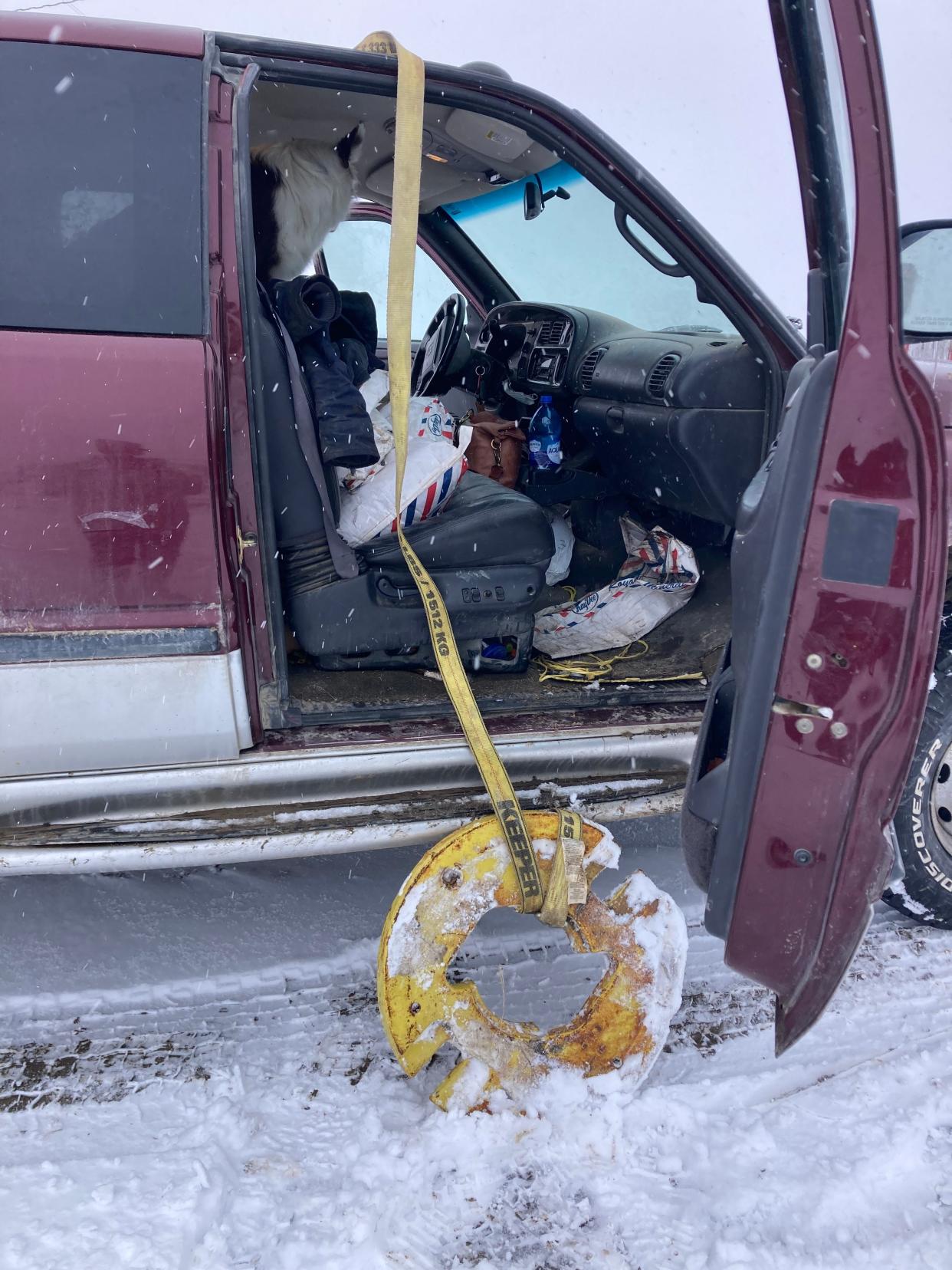Taking on tractor repair as a team

Last week, the headlines at our ranch, A Land of Grass, were all about tractors.
Green tractors. Tractors without computer chips. Tractors built when men wore hair below their shoulders, women broke out of the kitchen prison and Walter Cronkite described horrific scenes of war while my family ate dinner every night. We kids ate with our backs to the TV so we were protected from those scenes.
One of those elderly green John Deere tractors developed a leak in the box where the hydraulic hoses attach to the tractor. I happen to have a couple of extra hydraulic boxes laying around. I didn’t know what happened inside that box, but maybe a different one would do the same thing. Loosening a few bolts would do the job.
I asked my friend at Napa whether replacing the box would fix the problem. He mentioned o-rings inside the connector box. Yes, o-rings could wear out after 55 years, I agreed, beginning to understand what happened inside the box. The thought that this might be a common problem increased my confidence. Knowledge that I needed this tractor to feed my cows and sheep the next day diminished my confidence. I don’t mechanic well under a deadline.
Really, I just don’t mechanic well at all.
Naturally, my hydraulic box wasn’t exactly like the box in the picture, but I gathered enough information to understand how it worked. I have discovered that understanding the system is the key to every challenge, whether it is mechanical, physical or biological.
So I pulled the plungers out, used my fingernails to stuff new o-rings inside them and put the box back together before darkness fell. The next day, no hydraulic fluid dripped from the box. I was already feeling pretty good when my mechanic, Ron, texted. Ron has been working on my 49-year-old John Deere 4020 for two years. He helped me pull it out of my alfalfa field after it sat there for a year, able to start but not move. This tractor has a cab. A cab is handy during wintertime feeding.
Three winters of open-air hay hauling using handwarmers and scarves as barriers to arctic breezes has helped me appreciate new-fangled ideas such as cabs on tractors. Ron repaired the worn-out hydraulic pump, but the non-functional transmission system was a conundrum. Ron said everyone who ever knew how those transmissions worked had died.
Only a John Deere tractor would outlive humans, I replied.
Ron talked to a friend, reviewing how the transmission worked and how to test it. The conversation didn’t yield any ah-ha moments, but Ron’s mind worked overtime during the night. He woke up with an idea. I hope to get my tractor back within a few days. I’m not sure what I will do with a tractor that has a cab, heater, air conditioning and a functioning transmission. My first thought was that I’ll probably get stuck.
The after-market loader on that tractor shifted the weight to the front so if a snowflake falls, that 4020 disintegrates into a tizzy. I had a couple of rear wheel weights laying around. All I had to do was get them to Ron’s shop so he could bolt them on and rebalance the tractor. Those weights are heavy.
I couldn’t lift them into my pickup, but I could create a pulley that would. I hooked a ratchet strap to the weight leaning against the passenger side, laid the strap across the top of my pickup and attached the other end to a stable piece of heavy metal. I ratcheted each weight into the air so I could swing it into the passenger side of my truck.
No problem. After all, this was just one more system.
Lisa Schmidt raises grass-fed beef and lamb at the Graham Ranch near Conrad. Lisa can be reached at L.Schmidt@a-land-of-grass-ranch.com.
This article originally appeared on Great Falls Tribune: Prairie Ponderings: Taking on tractor repair as a team

